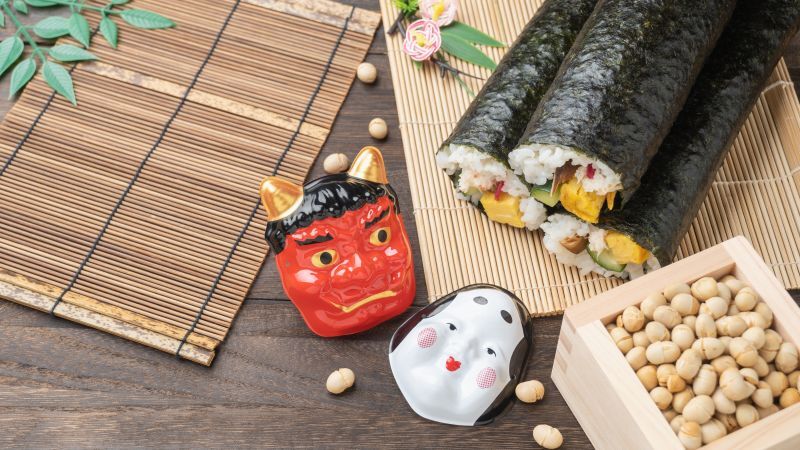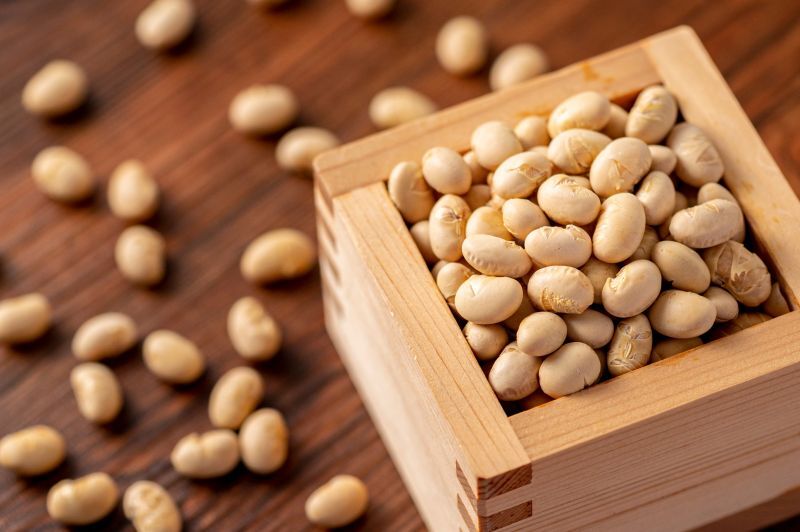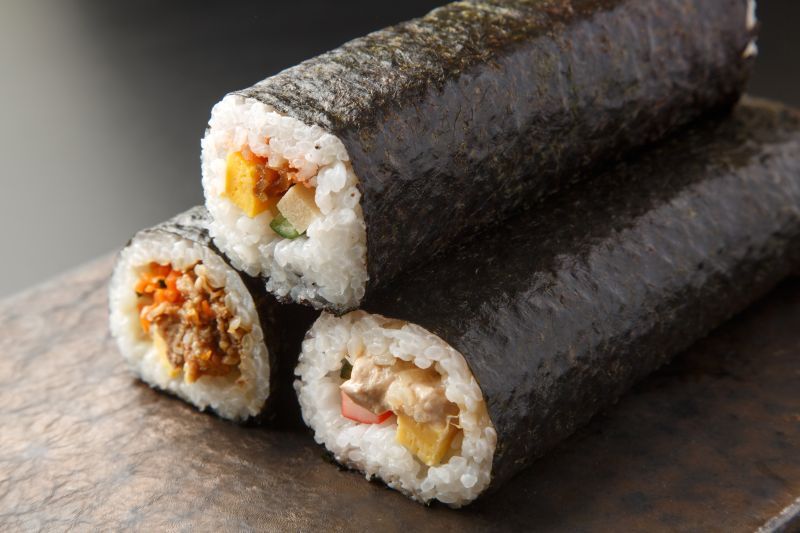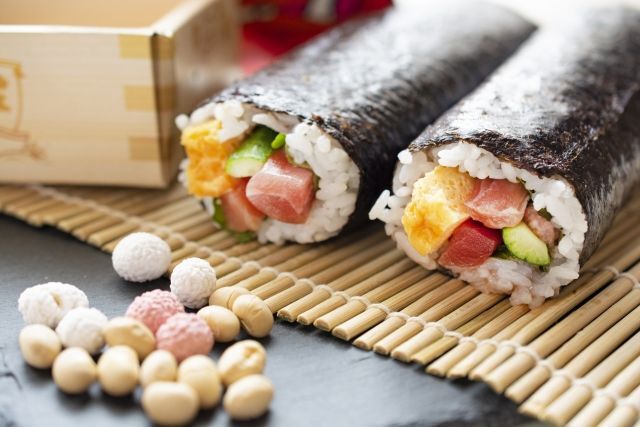Celebrating Setsubun: A Japanese Tradition to Welcome Spring
Celebrating Setsubun: A Japanese Tradition to Welcome Spring

節分 (Setsubun) is a traditional Japanese festival that marks the end of winter and the coming of spring.
The term "Setsubun" literally translates to "seasonal division," and it is celebrated on February 3rd or 4th, depending on the lunar calendar. (It's 3rd of February in 2024.)

The main ritual of Setsubun involves a custom known as "mame-maki," which is the throwing of roasted soybeans to drive away evil spirits and invite good luck into the home. During this ritual, people often shout "Oni wa soto! Fuku wa uchi!" which means "Out with demons! In with good fortune!"

"Ehoumaki," commonly known as "Fukumaki" or "lucky direction roll," is a special type of sushi roll associated with Setsubun.
The tradition of eating Ehoumaki during Setsubun is believed to bring good luck and prosperity for the year ahead. Ehoumaki is unique in that it is not sliced into bite-sized pieces like regular sushi rolls. Instead, it is eaten whole while facing a specific auspicious direction, known as the "lucky direction" or "ehou" in Japanese.(The lucky direction for this year is "north north east.)
The ingredients of Ehoumaki typically include a variety of colorful and symbolic fillings, such as seven different types of vegetables, seafood, and other flavorful components. The number seven is considered lucky in Japanese culture.
People often gather with their families to enjoy Ehoumaki, making a wish for good fortune as they face the designated direction while consuming the entire roll in one sitting. This tradition reflects the cultural significance of bringing positive energy into one's life as the seasons change.
When eating Ehoumaki, there are specific customs to observe to fully embrace the tradition. Here's a guide on the etiquette for enjoying Ehoumaki:
Choose the Right Direction:
- Before you begin, determine the auspicious direction of the year. This direction changes annually based on the zodiac sign, so it's essential to check which way is considered lucky for that specific year.
Prepare the Ehoumaki:
- Make or purchase your Ehoumaki. Traditional Ehoumaki consists of a cylindrical sushi roll with various fillings representing good luck and prosperity. Ensure that the roll is left uncut to preserve its symbolism.
Find a Quiet Place:
- Locate a quiet and comfortable place where you can enjoy your Ehoumaki without distractions. This could be at home, with family, or in a serene setting.
Face the Lucky Direction:
- Sit or stand facing the lucky direction for the year. This direction is determined based on the Chinese zodiac and can be found in various sources, including calendars or online resources.
Eat the Entire Roll in One Go:
- The unique aspect of Ehoumaki is that it should be consumed in its entirety in one sitting. Avoid cutting the roll into smaller pieces, as this preserves the symbolism of the roll bringing continuous good fortune.
Make a Wish:
- As you eat the Ehoumaki, focus on positive thoughts and make a wish for good luck and prosperity in the coming year. This is a personal moment to reflect on your aspirations.
Share the Experience:
- Ehoumaki is often enjoyed with family and friends. Sharing the experience enhances the communal aspect of the tradition and reinforces the idea of welcoming good fortune together.
By following these steps, you can fully appreciate the cultural and symbolic significance of Ehoumaki while enjoying the delicious flavors it brings.

Setsubun has its roots in ancient Chinese traditions and was later adapted into the Japanese culture. The festival is not only a time for cleansing and dispelling negativity but also an opportunity for families to come together and celebrate the changing of seasons with various customs and festive foods.

Facebook Comments